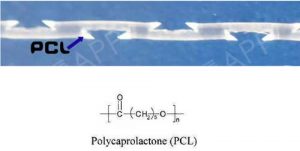PDO vs PCL threads used in thread lifting procedure
This article will go over the advantages and disadvantages of PDO threads, PLLA and PCL threads. Why is it important to choice different types of threads when it comes to different area of our face?
What is thread lifting?
Changes in our body that comes with ageing is inevitable but, we can use different procedures and treatments to minimize them. Thread lifting is a non-invasive procedure that uses dissolvable sutures to lift and tighten the skin. It only requires 30 to 40 minutes for a single procedure. This fibrotic reaction stimulates the production of collagen and helps to rejuvenate the skin.
Types of threads used in thread lifting procedure.
There are three types of threads introduced up till now.
1. Polydioxanone PDO thread:

Polydioxanone (PDO) thread is usually in blue color and it is made with Monofilament synthetic sutures that is used in wound stitching, widely used in surgeries since 1980. When applied to the skin, it remained for up to six months then gradually absorbed by the body and it is dissolve under the skin within’ 9 months. This suture activates the fibroblasts to stimulate collagen growth. By this process, it increases the firmness and elasticity of the skin. You can use them not only on the face but on the other parts of the body. There are different types of PDO threads used in different parts of body and face.
Results are noticeable 4 to 6 weeks after treatment and can last up to 2 years. PDO threads are most common used in thread lifting procedure, however the only disadvantage of PDO threads is the result does not last long, it is best to mix with PCL threads for long lasting result.

2. Poly-L-lactic acid PLA thread:
It is a poly L-lactic acid suture derived from biocompatible polymer and designed in such a way to give volume and lift saggy skin. Unlike PDO sutures, it takes more time to absorb by the body and regenerate collagen over time. The PLLA threads are not soft enough compares to PDO, it feels hard when insert into the skin. The patient might feel uncomfortable post treatments for a. few days, the PLLA threads might come out from the skin if the patients keep touching her face. Because the PLLA threads are hard, so it needs the patient not to touch the area for 2 weeks.
3. Polycaprolactone. PCL thread:

It is the newest bio-absorbable monofilament thread which is made of Polycaprolactone. It last longer than the other two threads and provides long-lasting results. The PCL threads are soft enough to blend, so patients feels comfortable post treatments. PCL threads allow patient have more facial movement post-treatment, they won’t look as stiff compares to PLLA threads. With the gradual dissolve of PCL after it is inserted into the skin, the PCL microspheres then distribute evenly in the 3D space within the subcutaneous tissue, building a scaffold that helps the skin re-grow autologous collagen. It promotes the production of collagen and hyaluronic acid. Regeneration of the collagen occurs continuously for a long time. This way, it tightens the skin, prevents it from sagging and provides long-lasting effects that continue even if the thread absorbs. However since the PCL threads are soft, so the lifting effect is not as obviously compares. to PDO threads, so it is recommend to mix with PDO threads to create a long lasting result.

Summary
Your cosmetic surgeon will decide which thread he will use, keeping in mind your age, thickness of skin, area of skin and whether your skin needs tightening, lifting or both.
16,669 total views, 21 views today





